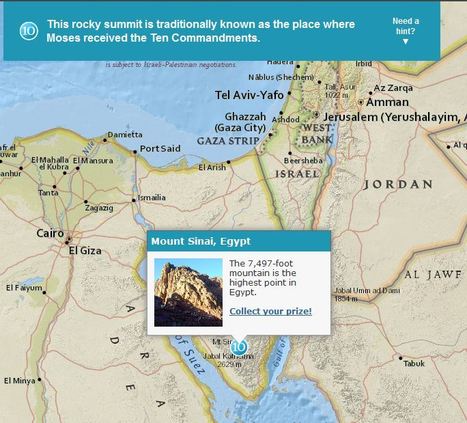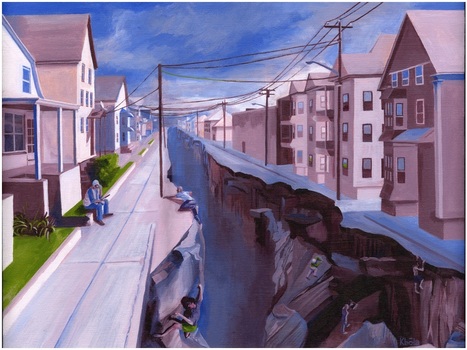Although these were designed specifically for GIS day during Geography Awareness Week, these 2 excellent map-based treasure hunts from ESRI are great any time of year. The answer to the question will only pop up in you are zoomed in the the right region (SHIFT + Make a box = Zoom to area). These links will take you to the World Cities quiz and also to the Mountains quiz.
Get Started for FREE
Sign up with Facebook Sign up with X
I don't have a Facebook or a X account
 Your new post is loading... Your new post is loading...
|
Cynthia Williams's curator insight,
July 29, 2013 12:33 PM
The picture ‘Political Landscapes,’ is a portrait of the haves and the have not’s and it illustrates the widening chasm of socioeconomic levels with the top 1% gaining and the rest steadily losing ground.
The decline of industry very often leads to the decline in jobs, schools and local government. With the erosion of the tax base cities are no longer able to maintain these institutions.
Donald Dane's comment,
December 10, 2013 8:41 AM
this picture meant a lot to me simple due to the fact that I've lived in the city of providence for the last three years now. everywhere I look in the city shows an identical view to this picture that protrays inner-city compact houses vs grass and space of the kind of suburbs. on the right is the inner-city version where houses are only separated by a one car width driveway and are two to three stores high to accommadate more families and people. the left side of the picture protrays a more suburb area of the city. but this area isn't necessarily the suburbs because it would be an area just minute outside of the busy city center like a north providence or east providence area. in north providence yes you technically have a yard and grass but it is so small that you mine as well have scissors to cut the lawn. with a bite more space houses being more single family oriented this is more luxurious than the left side of the picture

Denise Pacheco's curator insight,
December 17, 2013 1:27 PM
This pictures shows the difference between the city and suburbs. Even in the same city, you can have some parts that look more economically wealthier. But looking at it from a political view, I would guess that the whole in the ground that divides the two neighborhoods would be the line that divides democrats and republicans. City folk tend to vote more democrat because they want the government to assist the people. WHile Republicans tend to look out more for themselves. |













I enjoyed this exercise, it was fun and creative.
This is a brand new and to me, a unique way of exploring global geography by using trivia questions as a means to explore the world.
I love this geography, map-based quiz that let's people explore the world as they learn about some interesting places.